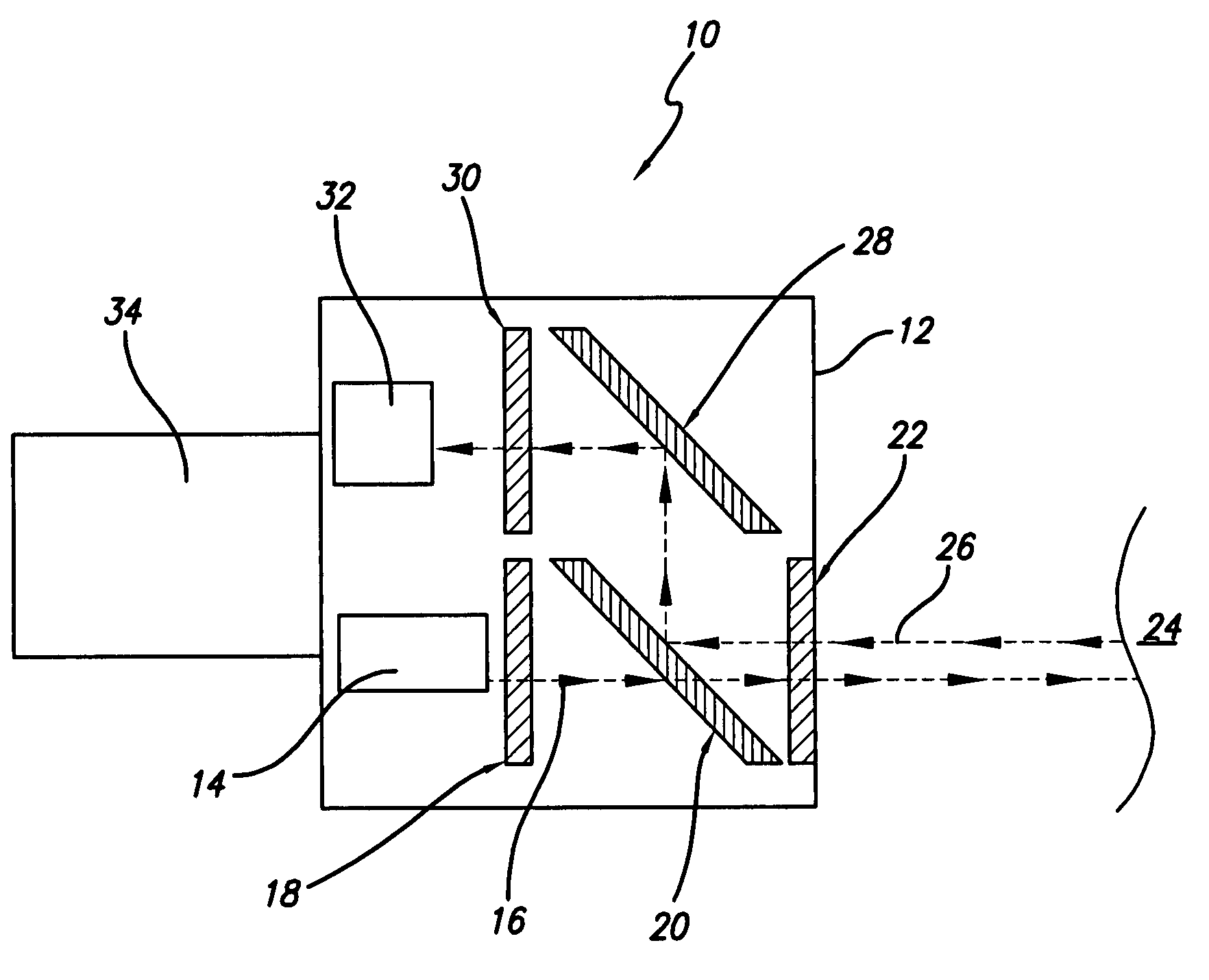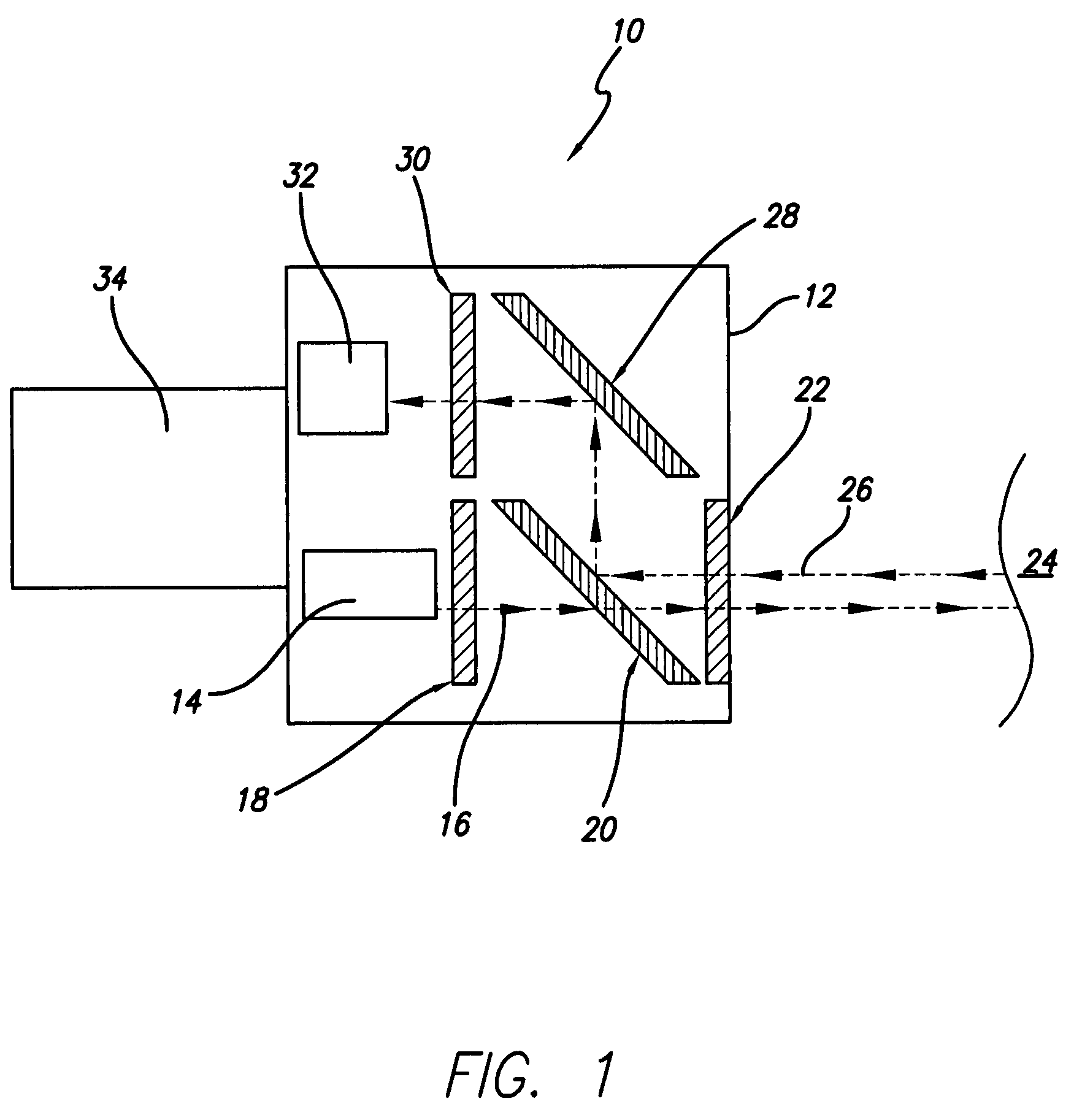Monitoring drug compliance, food-intake or toxin-intake using non-invasively-read labels
a technology of food-intake or toxin-intake, which is applied in the direction of fluorescence/phosphorescence, instruments, luminescence, etc., can solve the problems of increasing the likelihood of medication switching, physician visits or hospital admissions, and limiting the
- Summary
- Abstract
- Description
- Claims
- Application Information
AI Technical Summary
Problems solved by technology
Method used
Image
Examples
Embodiment Construction
[0015]Our invention preferably, but not necessarily, uses a sensor device which falls into at least one of these forms:[0016]a) It is part of or integrated with a biometric device.[0017]b) It is a peripheral of on integrated part of a PDA, cellphone or other personal electronic device.[0018]c) It is a contact-free device, not requiring skin contact.[0019]d) It is a skin-contact device but the contact is momentary.[0020]e) It is a worn skin-contact device (much like the cited prior art, for example).[0021]f) It is a device that utilizes a transdermal optical window or port.
[0022]In addition to these inventive device forms, we also teach a labeling material system for use with numerous types of new and prior art optical transdermal sensors. This labeling system utilizes nanoparticles or microparticle technology to offer a wide array of uniquely identifiable optical signatures to uniquely mark different types of drugs, foods, toxins, etc.
[0023]We claim this nanoparticles or micropartic...
PUM
 Login to View More
Login to View More Abstract
Description
Claims
Application Information
 Login to View More
Login to View More - R&D
- Intellectual Property
- Life Sciences
- Materials
- Tech Scout
- Unparalleled Data Quality
- Higher Quality Content
- 60% Fewer Hallucinations
Browse by: Latest US Patents, China's latest patents, Technical Efficacy Thesaurus, Application Domain, Technology Topic, Popular Technical Reports.
© 2025 PatSnap. All rights reserved.Legal|Privacy policy|Modern Slavery Act Transparency Statement|Sitemap|About US| Contact US: help@patsnap.com


